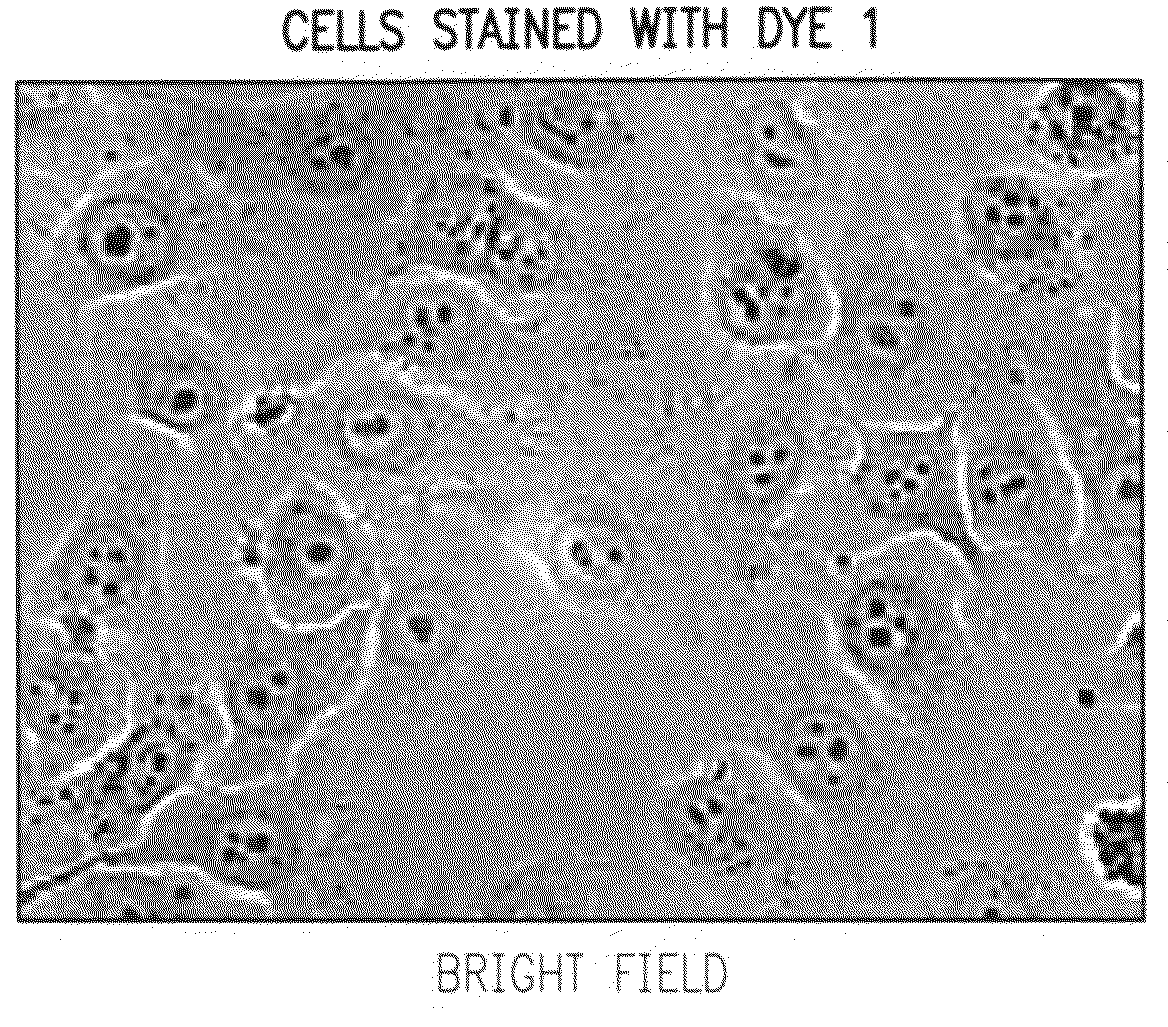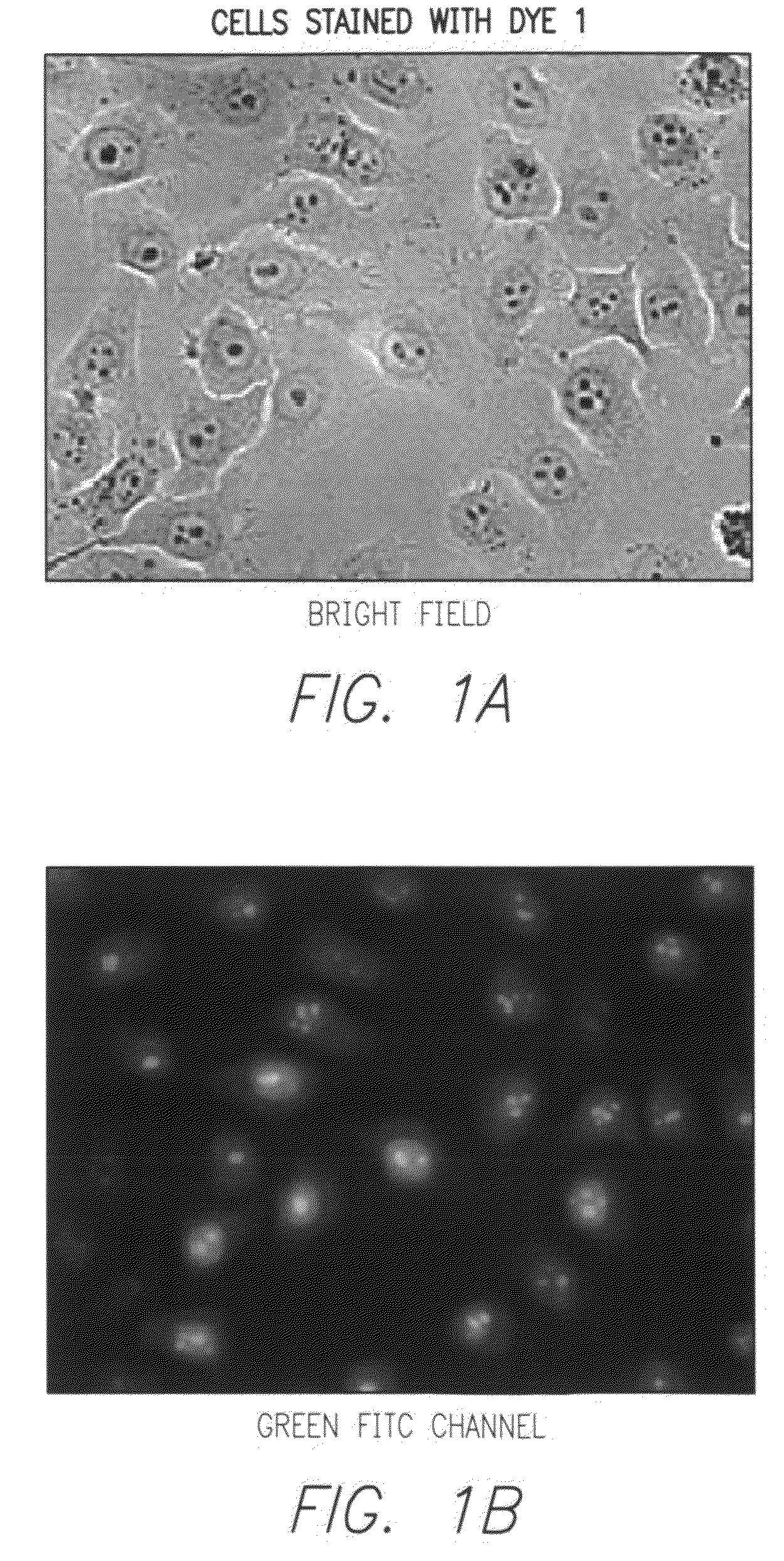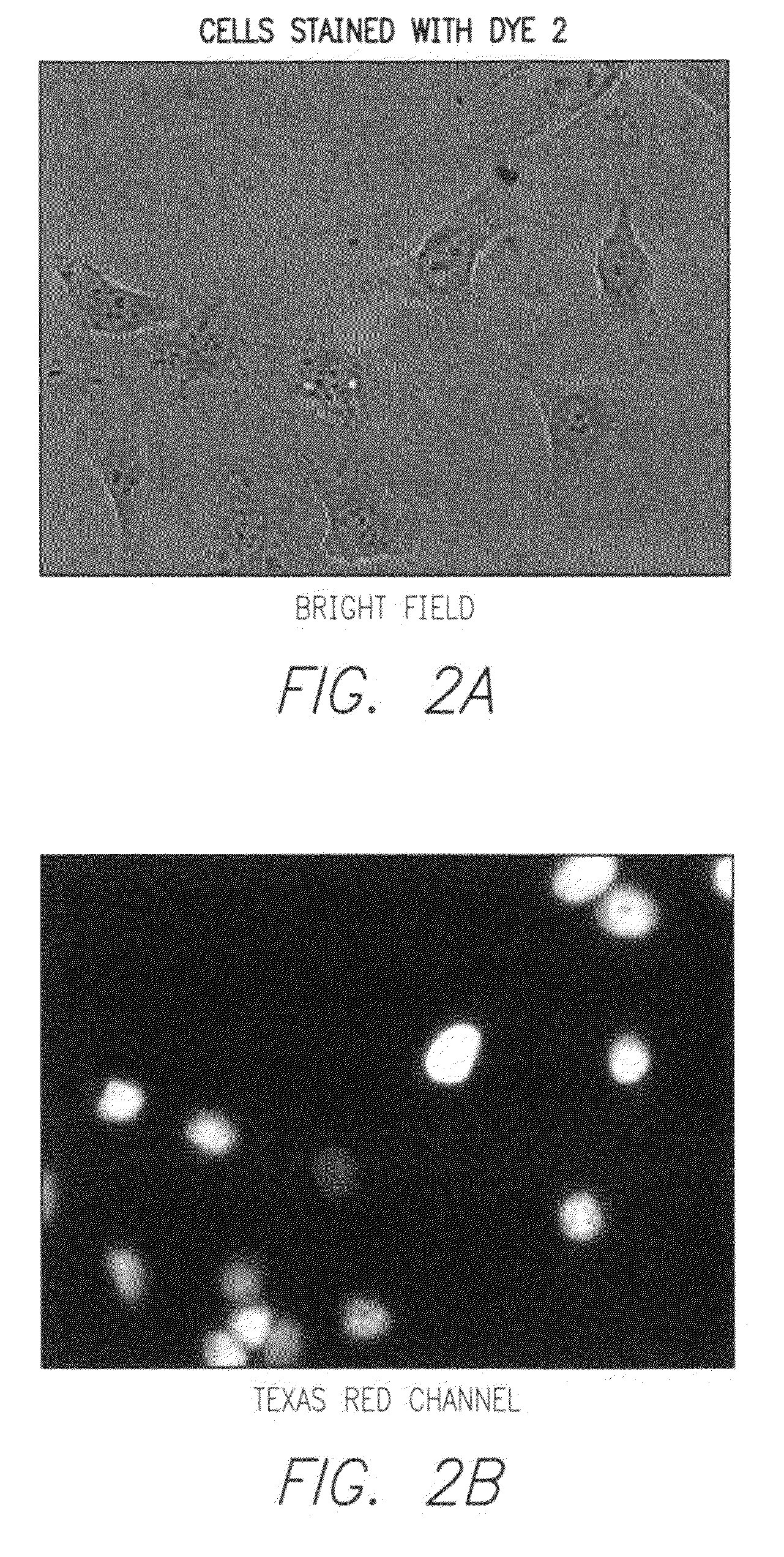Labeling of target molecules, identification of organelles and other applications, novel compositions, methods and kits
- Summary
- Abstract
- Description
- Claims
- Application Information
AI Technical Summary
Benefits of technology
Problems solved by technology
Method used
Image
Examples
example 1
Synthesis of Dye 1
(a) Preparation of 1-benzyl-4-methylpyridinium bromide (Compound 1)
[0132]To a solution of 4-picoline (9.3 g, 0.1 mol) in toluene (200 mL), benzyl bromide (34.2 g, 0.2 mol) was added dropwise at room temperature. After the addition, the mixture was heated to reflux for 5 hrs. The mixture was cooled to room temperature. The precipitate formed was collected by filtration, washed with toluene and dried under vacuum to give Compound 1 as white solid (21.4 g, 81%). It was used without further purification. The structure of Compound 1 is given below:
(b) Preparation of 3-(3-(diethoxyphosphoryl)propyl)-2-(methylthio)benzo[d]thiazole-3-ium bromide (Compound 2)
[0133]A mixture of 2-methylhiobenzothiazole (2.4 g, 13.2 mmol) and diethyl (3-bromopropyl)phosphonate (4.18 g, 16.1 mmol) was heated at 150° C. for 5 hrs. After the mixture was cooled to room temperature, ethyl acetate was added. The precipitate formed was collected by centrifugation, washed with ethyl acetate and dried...
example 2
Synthesis of Dye 2
(a) Preparation of 3-(3-(diethoxyphosphoryl)propyl)-2-methylbenzo[d]thiazole-3-ium bromide (Compound 3)
[0135]A mixture of 2-methybenzothiazole (0.36 g, 2.4 mmol) and diethyl (3-bromopropyl)phosphonate (0.67 g, 2.6 mmol) was heated at 130° C. for 4 hrs. After the mixture was cooled to room temperature, ethyl acetate was added. The precipitate formed was collected by centrifugation, washed with ethyl acetate and dried under vacuum to provide Compound 3 (0.37 g). This product was used without further purification. The structure of Compound 3 is given below:
(b) Preparation of Dye 2
[0136]A mixture of Compound 3 (0.2 g, 0.49 mmol) and 2-methylcyclopentane-1,3-dione (0.045 g, 0.4 mmol) was heated in a pressure tube at 210° C. for 2 hrs. After the mixture was cooled to room temperature, the melt was dissolved in warm DMF (2 mL) and then slowly added to vigorously stirred ethyl acetate (20 mL). Precipitated dye was collected by centrifugation, washed with ethyl acetate and ...
example 3
Synthesis of Dye 3
(a) Preparation of Ethyl 3-(4-methylquinolinium-1-yl) propylphosphonate (Compound 4)
[0137]A mixture of lepidine (1.0 g, 7.0 mmol) and diethyl(3-bromopropyl)-phosphonate (2.0 g, 7.7 mmol) was heated in a pressure tube at 130° C. for 4 hours. The mixture was allowed to cool to room temperature, and the resulting mass was dissolved in DMF (4 ml). The combined mixture was then added dropwise to ethyl acetate (40 ml). An oily residue was obtained which was washed with ethyl acetate (2×40 ml) and dried under vacuum to yield 1.9 g of Compound 4 which was then used without any further purification. The structure of Compound 4 is given below:
(b) Preparation of Dye 3
[0138]A mixture of Compound 4 (0.67 g, 1.66 mmol), 4-(dibutylamino)-benzaldehyde (0.43 g, 1.83 mmol) and piperidine (72 μL, 0.73 mmol) was refluxed in ethanol (5 ml) for 18 hours. The reaction mixture was cooled to room temperature and ethanol was evaporated and the residue thus obtained was purified by flash chr...
PUM
| Property | Measurement | Unit |
|---|---|---|
| Structure | aaaaa | aaaaa |
| Electrophilic | aaaaa | aaaaa |
Abstract
Description
Claims
Application Information
 Login to View More
Login to View More - R&D
- Intellectual Property
- Life Sciences
- Materials
- Tech Scout
- Unparalleled Data Quality
- Higher Quality Content
- 60% Fewer Hallucinations
Browse by: Latest US Patents, China's latest patents, Technical Efficacy Thesaurus, Application Domain, Technology Topic, Popular Technical Reports.
© 2025 PatSnap. All rights reserved.Legal|Privacy policy|Modern Slavery Act Transparency Statement|Sitemap|About US| Contact US: help@patsnap.com



